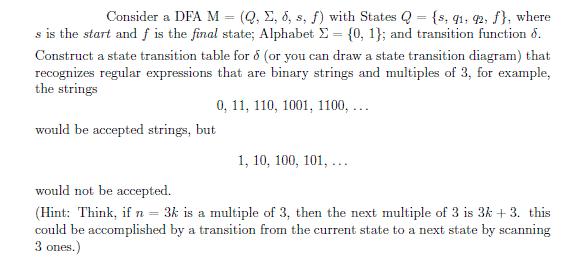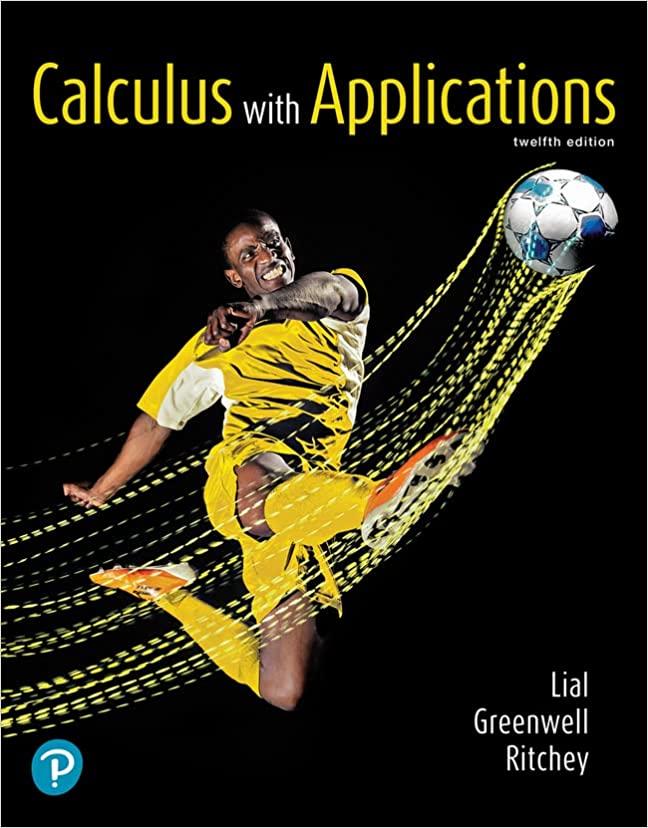Answered step by step
Verified Expert Solution
Question
1 Approved Answer
= == Consider a DFA M (Q, E, 8, s, f) with States Q = {s, q1, 92, f}, where s is the start

= == Consider a DFA M (Q, E, 8, s, f) with States Q = {s, q1, 92, f}, where s is the start and f is the final state; Alphabet = {0, 1}; and transition function d. Construct a state transition table for 6 (or you can draw a state transition diagram) that recognizes regular expressions that are binary strings and multiples of 3, for example, the strings would be accepted strings, but 0, 11, 110, 1001, 1100,... 1, 10, 100, 101, ... would not be accepted. (Hint: Think, if n = 3k is a multiple of 3, then the next multiple of 3 is 3k + 3. this could be accomplished by a transition from the current state to a next state by scanning 3 ones.)
Step by Step Solution
There are 3 Steps involved in it
Step: 1
To construct a state transition diagram for a finite automaton that accepts stri...
Get Instant Access to Expert-Tailored Solutions
See step-by-step solutions with expert insights and AI powered tools for academic success
Step: 2

Step: 3

Ace Your Homework with AI
Get the answers you need in no time with our AI-driven, step-by-step assistance
Get Started


